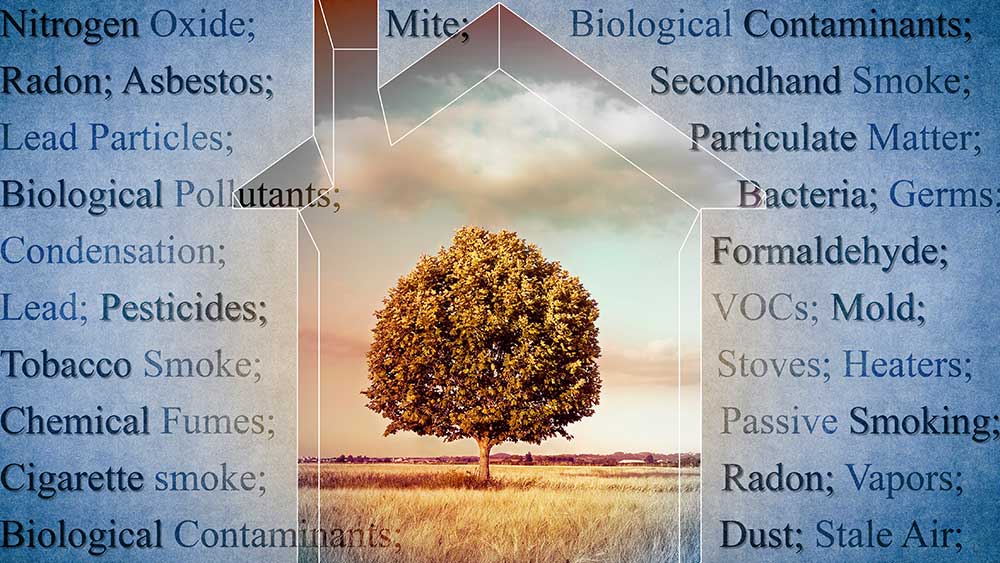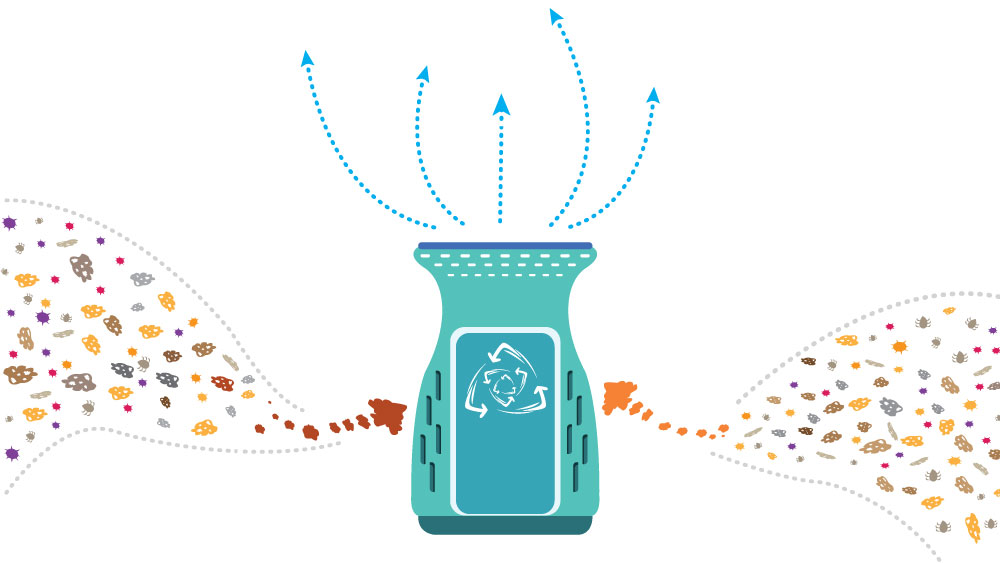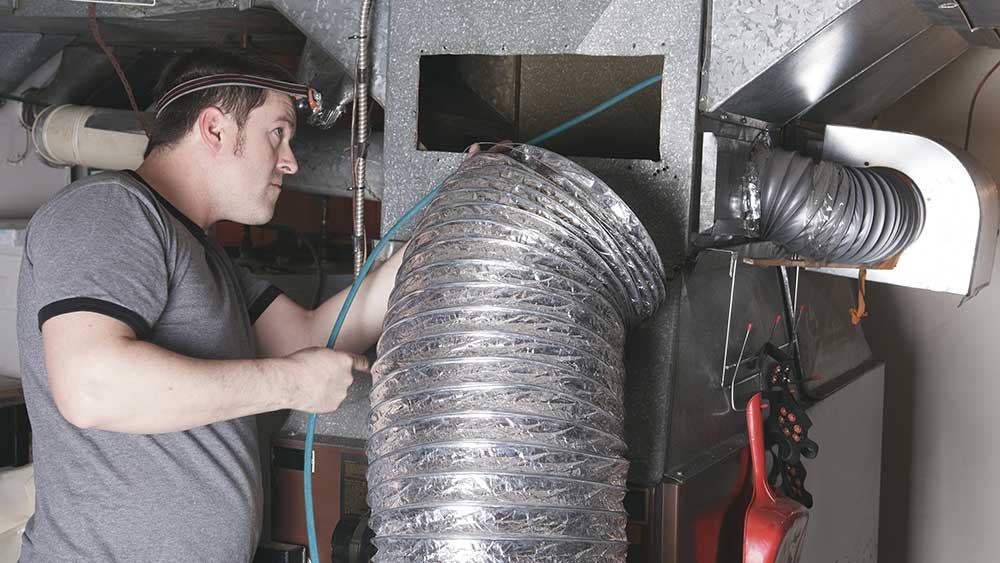
Key Takeaways
- Poor indoor air quality can lead to serious health issues including respiratory diseases and allergies.
- Maintaining your HVAC system is essential to prevent indoor pollutants from circulating around.
- HEPA filters and air purifiers improve indoor air quality by capturing fine particles.
Indoor air quality (IAQ) has always been a great concern for homeowners and workplaces alike, and even more so with the current pandemic enveloping the world. Frequent coughing, sneezing, and stuffy feeling are signs that your air quality is not up to par, and you might need to take a closer look at your HVAC systems and bring in some changes. Improved air quality not only ensures a happier environment but can also result in improved physical health. The question is, how to improve indoor air quality?
Even though there are no codified standards, workplace-related IAQ guidelines are published by the Occupational Safety and Health Administration (OSHA). IAQ has been identified by the Environmental Protection Agency (EPA) as one of the top five urgent environmental risks to public health. According to the Centers for Disease Control and Prevention (CDC), the majority of American citizens spend 90% of their time indoors. This includes an approximately 40-hour workweek spent indoors. All this points out the fact that IAQ has a significant bearing on the well-being of a person, and according to some experts, it has a greater effect on your health than outdoor air quality.
It then naturally follows that indoor air quality should be an area of focus.
Effects of Poor Indoor Air Quality
You can be mistaken for attributing your frequent sneezing and coughing to season variations. Why? according to the EPA, indoor air can be 2 to 5 times more polluted than the outside environment. But this is still not a topic that is widely discussed among circles. It can lead to negative effects later on.
Let us go over some quick facts:
- Poor indoor air quality leads to almost 3.8 million deaths per year, according to World Health Organization (WHO).
- According to the American College of Allergy, Asthma & Immunology, almost 50% of all diseases are caused by low indoor air quality. Long-term effects include cancer, heart disease and respiratory issues, short-term effects are similar to a cold and can involve headache, fatigue, dizziness, irritation in the nose and throat etc.
- Harvard study shows 10% increase in productivity with clean indoor air, while other than lower productivity, poor indoor air quality also shows a 30% increase in employee absenteeism.
- Poor IAQ can affect your HVAC system by clogging up your filters very often. This can restrict airflow. It will cause your system to work hard, this will lower its performance and increase your energy bills.
All these facts point out the need to emphasize improved indoor air quality as a critical component of employee health and workplace productivity. The same lessons can also be applied to a home environment so that it leads to a relaxing atmosphere.
Effects of HVAC on Indoor Air Quality

As said before, most of our time is spent indoors, either at home or at the workplace. This makes HVAC an integral part of our lives. But still, the emphasis with HVAC within the general public is usually on the cooling or air conditioning aspect of it and not on the ventilation part. Circulating quality air throughout the interior space and maintaining a healthy temperature balance is an important part of an HVAC system and should not be overlooked.
Your best choice to make any mini-split, window,
or portable AC smart. Enhance your comfort and savings.

An HVAC system brings in air from the outside and throws it inside the room after appropriate treatment. Air filters and ionizers are used to purify the air before it enters the indoor space. It is important to ensure that the filters and other associated systems remain in top condition so that outdoor pollutants do not come inside the room.
If your ventilation system isn’t in top shape, coupled with a poorly maintained filter, those contaminants can linger inside your home or office and become a cause of your concern. That is why it is imperative to maintain your HVAC system continuously. Moreover, moisture can build up within your HVAC systems and contribute to mold and fungus growth. This can serve as a host site for bacteria and viruses, which are detrimental to health.
Indoor Air Quality Testing
Before you go about improving your IAQ, you need to have an idea of the present IAQ situation. For that, an Indoor Air Quality Testing kit or an indoor air quality monitor is essential. There are different types of testing kits and monitors available, ranging from $80 to $200, depending on the type of contaminants they can detect. Some common parameters are humidity, carbon dioxide, chemical pollutants, mold, and particulate matter. So be sure to write down your requirements and buy an indoor air quality testing kit.
However, you may not be able to detect/measure all pollutants using one device. There are different types of pollutants, including biological, chemical, and combustion, present indoors, and one indoor air quality monitor can only tell you about certain pollutants.
You can also install carbon monoxide alarms, conduct tests for radon with kits available in the market, and read about the emission of VOCs on furniture guidelines. After conducting different tests using specialized kits, you’ll know what pollutants are present in more concentration.
In extreme cases, you can also contact a professional and get a thorough check for all the pollutants to know which type of pollutant you have to deal with.
Keeping your Indoor Air Quality Perfect

After reading the above discussion and stats related to poor indoor air quality, you must be wondering about possible indoor air quality solutions. Let’s take a look at the steps you can take for improved and healthy breathing indoors.
Source Ventilation Control
An integral part of HVAC systems, ventilation is critical in ensuring that the air you breathe is constantly recycled and purified of any contaminants. A buildup of stagnant air can cause common issues such as a stuffy room and accumulation of odor or much more serious problems such as excess levels of carbon dioxide. A good ventilation system can circulate fresh air throughout the room, purify it, and then remove it as well. Ducts and intakes have to be positioned so this purpose is well achieved.
Check Indoor Humidity Levels
In more humid conditions, humidity control is also an important consideration. An HVAC system is also used to remove humidity from the air, and in normal conditions, this water is drained outdoors through a series of drain pipes. Over time though, these pipes can become clogged or damaged, resulting in blockage. This is when the moisture can spread throughout the HVAC system and become a breeding ground for mold and mildew. This gives rise to bacteria that can then spread through the ductwork and cause illnesses, which is why it is recommended to check up on your HVAC system routinely.
Similarly, low humidity levels can also become a cause of major concern if ignored for a longer period. It can irritate your skin and the nasal passage, causing inflammation. You can use a humidifier, an indoor fountain, or even plants to bring up low humidity levels.
Environmental Protection Agency suggests the humidity level to be between 30-50%. However, as a general rule of thumb, the optimal level of humidity in buildings for your respiratory immune system and reduced respiratory infections should be in this range.
Read this article to learn how you can manage indoor humidity.
Measure Pollutant Levels
Various volatile organic compounds (VOCs) can be measured. It can be done by purchasing a VOC sensor. Moreover, get a thorough check by a professional who can also identify the sources polluting the air. A VOC sensor will indicate the level of harmful compounds, and you can match them with the guidelines provided by EPA. You can also take assistance from your local health department to learn about the available indoor air quality solutions.
Regular System Maintenance
For an HVAC system, filters are the first line of defense against outdoor pollutants. They are designed to capture pollutants and restrict them from entering the indoor space. Over time, they can become full of collected dust and dirt, and their efficiency is reduced. Now they are doing more damage than good. Hence, routine checkups and replacement of air filters are mandatory to prevent clogging of the air lines. For ductless systems, a smart AC controller such as the Cielo Breez Plus can tell you when your filter replacement is due so that you won’t be caught on your heels.
There are other types of filters available as well that can remove finer particulate, called HEPA filters. These are recommended for people with allergies.
Similarly, for ducted systems, the ductwork needs to be frequently inspected. Rodents and even birds can sometimes take refuge within the ductwork. It can be a source of bad odor in your AC.
Aftermarket Air Purifiers
An indoor air purifier is a must-have if you are looking to remove those micro-organisms from your air. The inbuilt air filter of an HVAC is only good for larger particles. A heavy-duty HEPA filter is good for trapping particles of 0.3 microns and above. Meanwhile, electrostatic fields are used to capture microscopic particles like viruses.
Moreover, activated charcoal filters can also be used to capture large amounts of micron-sized particles. They can keep the indoor environment clean. A pound of activated charcoal can have a surface area of 100 acres. Thus having an area large enough to filter through the air effectively.
Ultraviolet air purifiers are becoming a popular choice now within the industry. As the name suggests, UV air filters kill bacteria and viruses by blasting them with ultraviolet light rays. It kills them as bacteria pass through it.
Related: What Are HVAC UV Lights For?
Weatherize Your Home
While this may sound unrelated but weatherizing your home can significantly impact the quality of indoor air. Before winter, if your home is ready to take in the extreme changes, you won’t need to run your HVAC much often. It’d then not become a source for spreading airborne particles or infiltrating the air. Similarly, the same can be done in the summer season. It can help to improve indoor ventilation and depend less on air conditioning equipment. Read our guides to prepare your home for winter and summer to learn more.
HVAC Maintenance is the Key to Good Air Quality

Maintenance is the most cost-effective solution to maintain a healthy indoor living environment. Always keep in mind the signs of your air conditioner needing a tune-up. If your HVAC system is not in proper condition, air quality will most definitely be compromised. Routine maintenance procedures, including cleaning and replacing air filters and evaporator coils, are extremely important. If you have a smoker in the house, air filters can become clogged up with smoke particulate pretty quickly. It will leave a characteristic smell that can sometimes overwhelm the occupants. There are more drawbacks to your indoor air quality brought about by smoking indoors, such as absorption in residual room dust, cross ventilation across the home, and seepage into walls and ceilings. Care should be taken to ensure that the drainage pipes are also clean and that no mildew or mold is growing in there.
Another benefit of these checks is that you can quickly find any suspected leaks within the refrigerant coils. They can be a source of harmful gases within your home and could lead to deadly Carbon Monoxide leaks.
We can now appreciate the importance of good indoor air quality for healthy living. Not only does it keep your household safe, but as a workplace owner, it saves you on additional medical. Moreover, also covers insurance costs as well, resulting in greater employee productivity. Implementing all the measures mentioned above will improve the indoor air quality of your space and lead to happier living!
For a smart home indoor climate control experience, explore Cielo’s smart products now!








